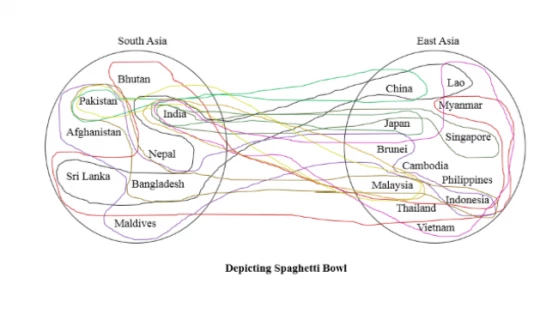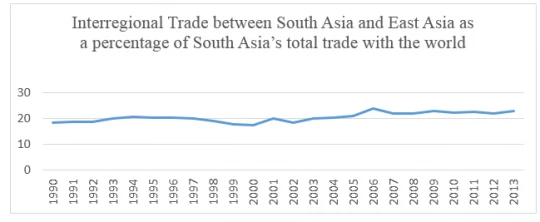As part of the organizing team for the South Asian Economics Student’s Meet (SAESM’13) in Lahore, Pakistan, I already had an overview of what it was like to be part of the SAESM family. The idea behind the first annual conference in 2003 was to provide a platform for the South Asian undergraduate students of economics to interact with each other, exchange ideas, and discuss economic issues in an out of class environment. Participants either write a research paper and present it, or take part in a multiple round competition to contest for the honor of being The Budding Economist of South Asia. In addition, SAESM gives an opportunity to establish cross border friendships and create memories that last a life time. So as soon as the applications for SAESM’14 (Bhutan) opened, I applied to be a part of the Pakistani delegation, and was selected after an academically challenging interview.
I decided to write my research paper on the sub-theme ‘South Asia in Global Perspective’. A lot of hard work, with numerous nights skimming relevant papers, articles and publications led me to narrow down the topic to ‘Impact evaluation of Spaghetti Bowl Effect on South Asia-East Asia trade relations’.
The Spaghetti Bowl Effect is an interesting phenomenon in trade economics where the increasing number of Free Trade Agreements (FTAs) between countries slows down trade relations between them. This term (spaghetti bowl) makes an analogy between the tangling of spaghetti in a bowl with the tangling of different FTAs in a region. Spaghetti bowl phenomenon was first discussed by Jagdish Bhagwati in 1995. In free trade agreements, members agree on a lowered internal tariff to be applied between them, while at the same time each member can have its own external tariff levied on imports from non-member countries. This introduces the concept of ‘country of origin’ of the traded product; it is used to distinguish products of one country from the other in this highly globalized world where products often pass through many countries in the production process. Furthermore, there are rules in international trade known as ‘Rules of Origin’ (ROO) which set the criteria to determine the country of origin. The issue is that each FTA has its own ROO and when FTAs grow in number and tangle with each other, so do the ROO. It then becomes nearly impossible for producers to comply with all the ROO simultaneously.
In the diagram above the connecting lines of different colors show different FTAs. The matter of concern is that even after the signing of these agreements, the trade volume has not gone up as expected.
Up till 2003, there was only FTA connecting South Asia and East Asia, namely the Asia Pacific Trade Agreement (APTA) signed in 1975. Today, the number of agreements have gone up to 10.
The following graph shows that throughout, the trade volume between South Asia with East Asia as a percentage of South Asia’s total trade with the world has remained stagnant at around 20%, with the proliferating trade agreements adding nothing substantial to the trade volume.
*Percentage on y-axis. Years on x-axis. Data from IMF-DOTS.
The hypothesis of my paper is that one of the reasons why the trade volume has not gone up as expected is due to the spaghetti bowl effect. To test this hypothesis, I used the gravity model of trade and incorporated two dummy variables to capture the effect of spaghetti bowl. I found that signing additional trade agreements has a negative impact on trade volume between countries of the two sub-regions.
As a policy proposal, I recommend to do away with all the 10 trade agreements, and go for a South Asia-East Asia FTA linking the two sub regions. My recommendation is corroborated by a recent simulation study done by the Asian Development Bank which compares the expected results of different prospective FTAs in Asia. It shows that the gains are greatest by the formation of a single South Asia-East Asia FTA. My presentation was well received at the conference. One of the jury members advised me to further explore the spaghetti bowl phenomenon by measuring the marginal impact of each additional FTA signed between the two sub-regions. The results can be graphed and help to extract more practical policy recommendations instead of doing away with all 10 FTAs a somewhat difficult and long term task in the given socio political environment of the region.




Join the Conversation